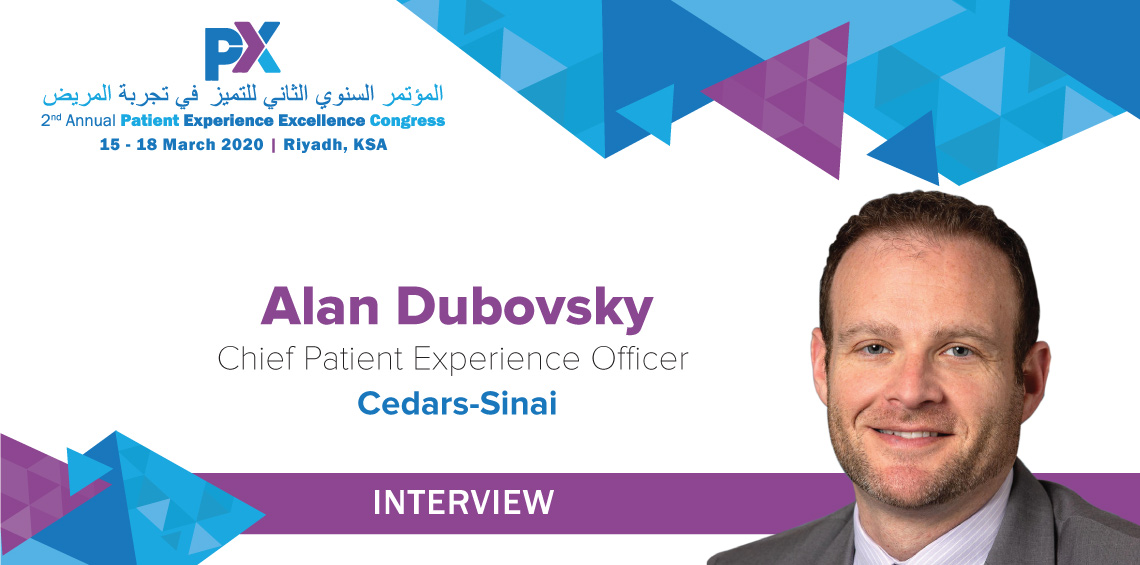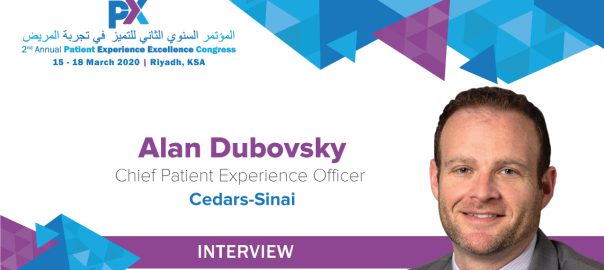Alan Dubovsky is the Chief Patient Experience Officer for Cedars-Sinai Health System in Los Angeles, California.
In his role, Alan is responsible for the facilitation of all patient experience strategy and operations improvements in the inpatient, ambulatory, emergency, and ancillary areas for the health system.
Prior to joining Cedars-Sinai, Alan was with Emory Healthcare in Atlanta, Georgia, serving as the Director of Operations. In that role, Alan was responsible for patient experience and physician engagement, international health, and leadership and talent development.
Alan completed his undergraduate degree in Business Administration at the University of Georgia and his Executive Master in Business Administration at Emory University.
Interview
How do you address the challenge of alignment – organisational culture, healthcare outcomes, service delivery and patient experience and how do you prioritise?
I believe these elements do not conflict with each other and quite on the contrary, results in any one of these domains can only occur when aligned efforts happen across all streams concurrently.
In fact, in the US, even though the HCAHPS (Hospital Consumer Assessment of Healthcare Providers and Systems) questionnaire was originally developed by government agencies to measure patient experience, it quickly became clear that hospitals with higher patient experience scores also had better patient outcomes.
Other studies have also shown a clear correlation between employee engagement and patient experience.
Caregiver burn-out is a growing epidemic in the healthcare industry – how do you ensure caregiver wellbeing and build resilient teams that are committed to deliver exceptional care at all points?
Employee burnout is twice as high in healthcare than in other industries. This is due to several reasons specific to healthcare such as the emotional strain of losing patients and long hours on the job. To ensure caregiver wellbeing, healthcare organizations, including ours, are increasingly aware of the need to provide emotional support to caregivers, create a work-life balance, and strengthen connections with patients and other caregivers. Programs to support caregivers during stressful times, promote healthy habits, and connect caregivers to their team and to the patients they care for are all examples of how the industry is dealing with burnout.
How design thinking in Healthcare can improve patient experience?
Patient experience can benefit a lot from design thinking. As patient experience professionals, we are often challenged with the need to come up with new solutions for old problems. Design thinking encourages us to challenge preconceived notions of what heathcare should look like and reimagine entirely new ways of doing things.
What is the most interesting thing you have observed while analyzing patient feedback to measure and improve patient experience.
Patient feedback and concerns are very similar across hospitals and across geographical zones. This means that opportunities to learn from other organizations and sectors abound. There are many untapped opportunities for us to share knowledge, learn from each other, and in turn, revolutionize the way we care for our patients. Yes, cultural differences generate slightly different expectations but at the core, patients and their families want the same things: ease of access to our hospitals, straight forward processes without delays, positive medical outcomes and friendly faces.
What is your Patient Experience Vision 2020 and what will you do differently?
My vision for this year is to push boundaries even further in our hospital group and challenge all preconceived notions. I want us to tackle issues that have plagued the industry for decades and achieve breakthroughs. We will be looking at improving our waiting times, improving access to services, and connecting with patients and their families at every step of their journey.
As a speaker at PXEC, what are you most looking forward to?
I look forward to learning from all the great speakers and attendees. Over time I have learnt that no one person has all the answers and that you can learn something important from every person you encounter.



